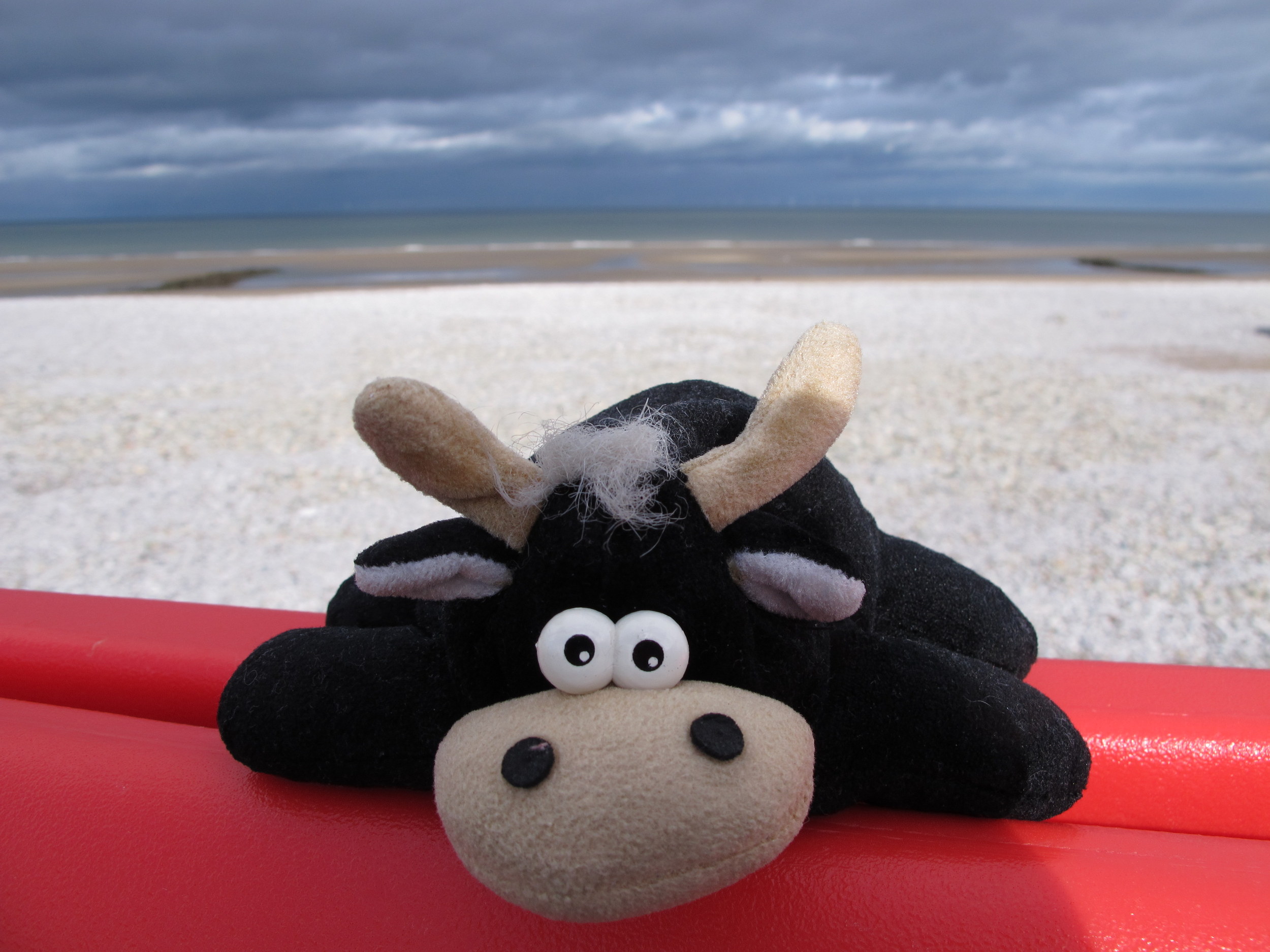It has been disappointing how little I’ve progressed on my round-Wales walk over the past few years since I started in 2015. But on a positive note, I have started leading a round-Wales tour with Back-Roads Touring, one of the tour companies I work for. The tour has taken me to some fabulous, familiar places but also to some surprising new gems that I had never heard of before. Did you know where in Wales you can find King Arthur’s round table or a reconstructed iron age hillfort? Who is Hedd Wyn and why are his chairs so significant? What is white wine in Welsh and if you don’t know, where can you go to learn? What is a coracle and why did the people in Birmingham get their water from Wales? Learn this and more in the next seven days during Pep Walks Wales month: a new item added to this post each day this week
Castell Henllys – Iron Age Village (7/7)
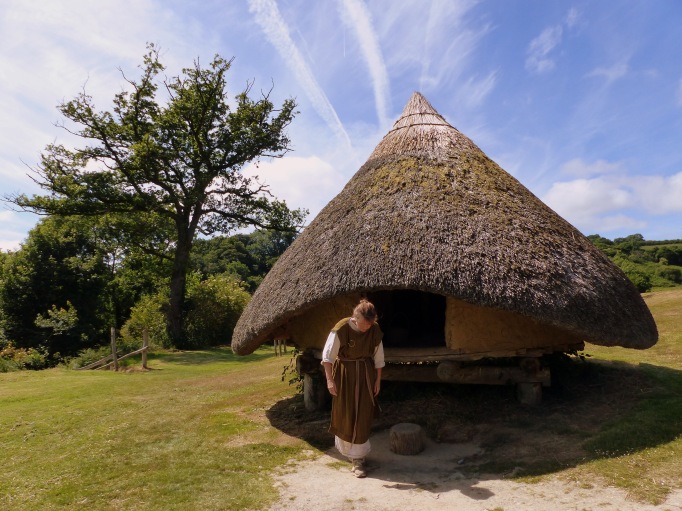
Castell Henllys is a reconstructed iron age hillfort near Newport in the Pembrokeshire Coast National Park. Extensive archaelogical excavations have been made on the site and it is known that there has been a settlement 2,000 years ago. The excellent guides and reconstructions really bring this fascinating village to life.
Further information about Castell Henllys
Again a little difficult to get to without a car unless you’re happy to walk about 30 min from the nearest bus stop by the Salutation Inn on A487 to the visitor centre and then another 10 minutes to the village. The bus service T5 – Aberystwyth – Haverfordwest via Newquay, Cardigan goes past the stop.
Nant Gwrtheyrn – the National Welsh Language and Heritage Centre (6/7)

At the bottom of a thrilling drive down a steep hill on the Llŷn Peninsula in northwest Wales you will find Nant Gwrtheyrn or the Welsh Language and Heritage Centre. The centre, built on the remains of a former quarrying village, now offers Welsh language courses for adults. The courses range from longer residential courses to fun short tasters for tourists.
The location of the centre is very scenic and can’t wait for when I eventually get there on the Wales Coast Path (though at the rate I’m progressing on my plan, it will be in the next lifetime). There are many legends and interesting history related to the place, too. The deserted village was taken over by hippies for a period in the 1960s and the story is that to get them out, John Lennon himself bought them an island off the coast of Ireland.
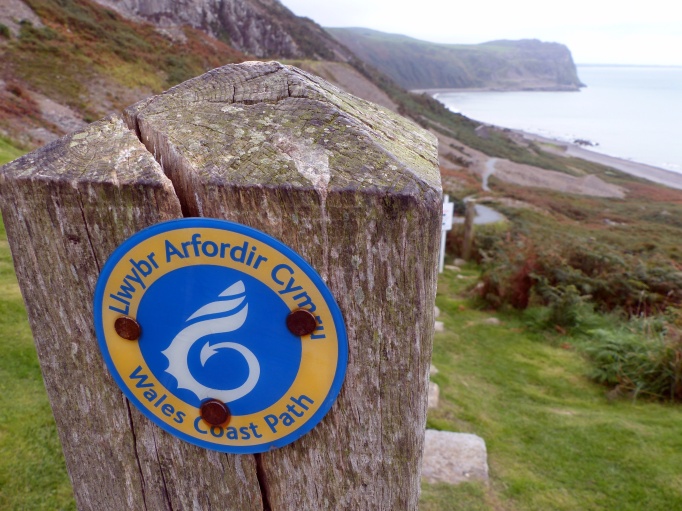
Further information about the the Welsh Language and Heritage Centre
It is not easy to get to Nant Gwrtheyrn without your own transport, but you can get to the nearest village, Llithfaen by bus from, for example, Pwllheli (25 min). The nearest bigger towns are Caernarfon to the north and Porthmadog to the east. But you really should be walking there on the Wales Coast Path!
Elan Valley – Victorian Dams (5/7)
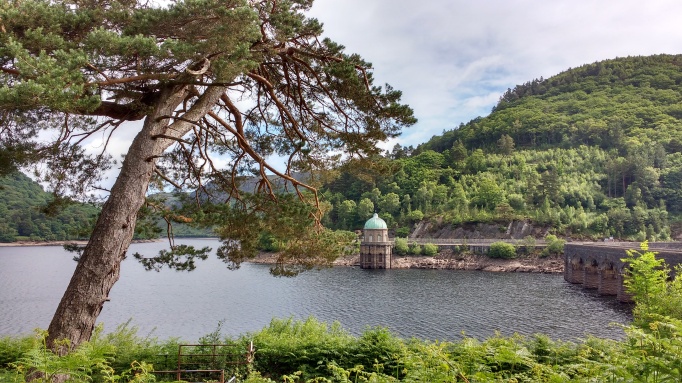
Near the town of Rhayader in mid-Wales, you will find the beautiful Elan Valley, where huge dams to cater for the water needs of Birmingham were built at the end of the 19th centrury. The location was selected because of – apart from being close to Birmingham obviously – the shape of the valley, the type of rock and, naturally, because it gets a lot of rainfall. The four dams are a magnificent piece of Victorian engineering. They were opened in 1904 by King Edward VII and Queen Alexandra, and they are still very much in use. You can view one of these awe-inspiring structures from the visitor centre, or walk (drive/cycle) right up to it. The area is popular among walkers and cyclists with a variety of trails available. The area is also known for being the testing ground for the famous “bouncing bombs”, developed by Sir Barnes Wallis, used to attack German dams in WW2.
There is a café with great cakes, a gift shop and exhibitions in the Elan Valley Visitor Centre.

Caban Coch Dam
Further information about the Elan Valley and the dams
You can get to Rhayader by bus from, for example, Llandrindod Wells (30 min) or Aberystwyth (1:10 hrs). From there, it’s still 6 km (3.7 miles) to the visitor centre, so you’d need to take a taxi if you don’t have your own transport (car, bike or legs). More information about transport options from here.
The National Coracle Centre (4/7)
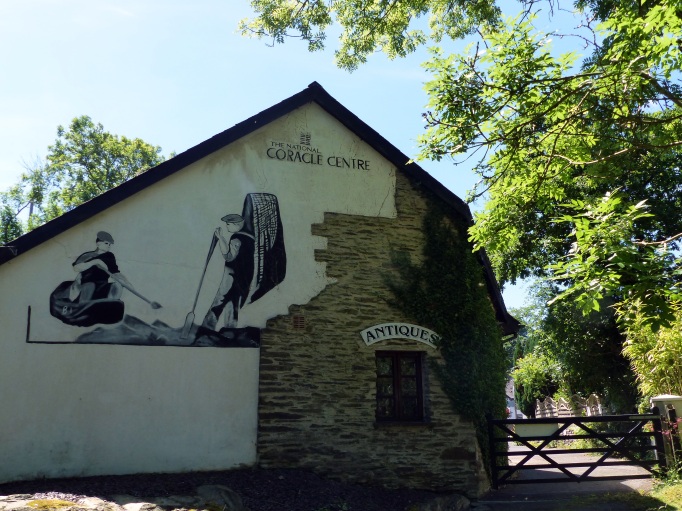
I had no idea of what a coracle is before a visit to this wonderful, small museum in the village of Cenarth. Coracle is probably the oldest type of boat found anywhere and everywhere in the world. It is a light-weight, rounded vessel built with whatever material was available locally, with a body of wood/bamboo covered with animal hide. I highly recommend booking a guided tour with the host who will give you an entertaining and informative introduction to his collection of coracles from across the world, from Britain to Ireland and from North America to Tibet.
Cenarth is a charming, small village on the river Teifi, on the border between Ceredigion and Carmarthenshire in Western Wales. It is famous for its salmon leap and Cenarth falls and the 18th century bridge with a couple of tea rooms and gift shops and a pub.
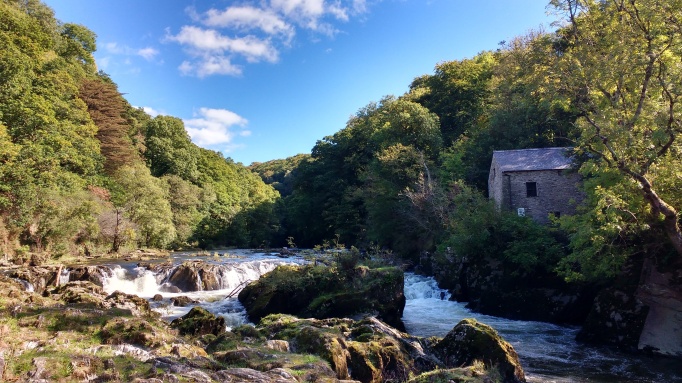
Cenarth falls and the old mill
Further information about the National Coracle Centre
You can get to Cenarth by bus from, for example, Cardigan (15 min) or Carmarthen (1 hour). Travel information
Yr Ysgwrn, the home of the poet Hedd Wyn (3/7)
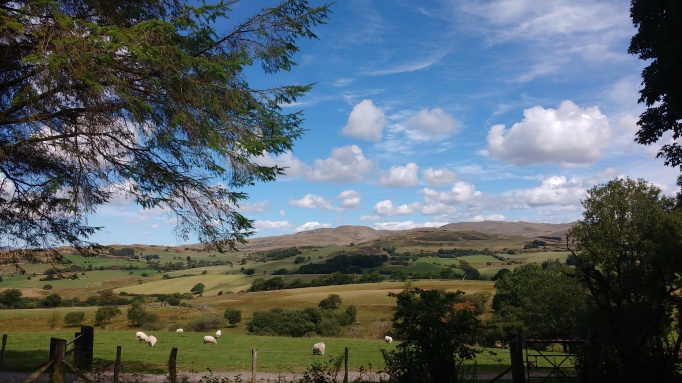
A view from the house
Yr Ysgwrn is the home of Ellis Evans (13 January 1887 – 31 July 1917), a farmer and a chair-winning Welsh poet, who tragically died at a young age in WW1. A chair-winning poet? I hear you raise your eyebrows. Indeed, a chair is the traditional prize awarded to winners in Welsh bardic competitions called Eisteddfod. Welsh poets were also traditionally given bard names, and Ellis Evans’s bard name is Hedd Wyn, “the blessed peace”.
Hedd Wyn won several local and regional chairs, the first at the age of 20. He was awarded the national chair post-humously in 1917. He wrote the winning poem on his leave during the war, then forgot it at home, re-wrote it on the way back to the front, and send it to the National Eisteddfod under pseudonym Fleur de Lys. When the winners were announced and his real name revealed, he was not there to collect his prize. Once the audience learned the sad news of his death only a couple of months before in a battle in Belgium, the chair was draped in black cloth and has ever since been known as the “black chair”.
The farm, located in the middle of the Snowdonia National park, is now a museum where you’ll find all his famous chairs, among other things. There is also a visitor centre with a gift shop and a tea room, not to mention amazing vistas.
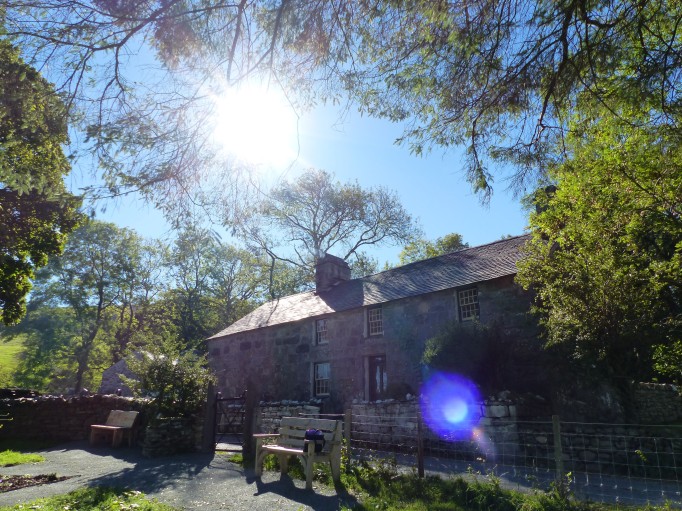
Hedd Wyn’s Home
Hedd Wyn wrote in Welsh, but here is an English translation of one of his most quoted poems:
Rhyfel (“War”):
Why must I live in this grim age,
When, to a far horizon, God
Has ebbed away, and man, with rage,
Now wields the sceptre and the rod?
Man raised his sword, once God had gone,
To slay his brother, and the roar
Of battlefields now casts upon
Our homes the shadow of the war.
The harps to which we sang are hung,
On willow boughs, and their refrain
Drowned by the anguish of the young
Whose blood is mingled with the rain.
Further information about Yr Ysgwrn and Hedd Wyn.
The nearest town and train station is Blaenau Ffestiniog (16 km/10 miles away) and the nearest bus stop in the village of Trawsfynydd (1.6 km/1 mile away).
Wine-tasting in Wales – Whitecastle Vineyard (2/7)

A visit to Wales would not be complete without tasting some local wine, right? Eh? – you may say. Yes, Britain including Wales is very up and coming in wine-making in these days of changing climate. They are winning prizes left, right and centre, particularly for sparkling and white wines. The growth of wine production has been dramatic in the past 10 years: In England and Wales, there are now 2,500 hectares under vine, over 500 commercial vineyards, and about 150 wineries (2018). Even the French producers are buying land in the UK to safeguard their future production.
You can visit many of the wineries and do some tasting. Robb and Nicola Merchant welcome visitors in their small, 2-hectare (5-acre) Whitecastle Vineyard in the village of Llanvetherine, within the rolling green hills of Monmouthshire. I love my wine but couldn’t distinguish a hint of grapefruit from a suggestion of elderflower, so if you you’d like a more knowledgeable introduction to the award-winning wines from the Vineyard, check out a blog post by Heidi on the Lees.
Or better yet, book a visit and tasting to the vineyard!
All I’d like to say that their white wine Gwin Gwyn – which means white wine in Welsh by the way – that I bought on my first visit went down very well, and I’ve been buying a bottle on every visit ever since! You can even adopt your own vine!
More information about White Castle Vineyard
Whitecastle Vineyard is 11 km (7miles) from Abergavenny train station, with frequent connections to Newport (25 min) and Cardiff (35 min). From there it’s probably best to take a taxi if you don’t have your own transport. More information about public transport to Abergavenny.
Or it’s only about 1.5 km detour (one way) from Offa’s Dyke Path, one of the National Trails in the UK.
You can find further information about wineries to visit in England and Wales through WineGB website. WineGB is the national association for the English and Welsh wine industry.
Caerleon – roman history (1/7)

What did the Romans ever do for us? Aside from the sanitation, education, medicine, wine, public order, irrigation, roads, the fresh-water system, and public health, quoting the classic Monty Python film, Life of Brian. Well, in Wales, among other things, they built a huge legionary fortress by the river Usk around 75 AD. They called it Isca Augusta, Isca being what they called the river and Augusta for the Second Augustan legion that occupied the fortress. Now we know the town as Caerleon, “the city of legion”.
Caerleon offers a fantastic glimpse of Roman life in Wales: the remains of the barracks of the legionaries and Roman baths, and the most complete amphitheatre in Britain. All of these you can see within easy walking distance from each other in central Caerleon. And then have them all explained to you in the Wales National Roman Legion Museum, one of the seven museums under the umbrella of National Museum of Wales.
In the middle ages it was believed that Caerleon was the location of King Arthur’s court and that the fabled round table was actually the Roman amphitheatre.
Further information about Caerleon
Caerleon is about 8 km (5 miles) from Newport with a frequent train connection (about 15 min) from Cardiff.
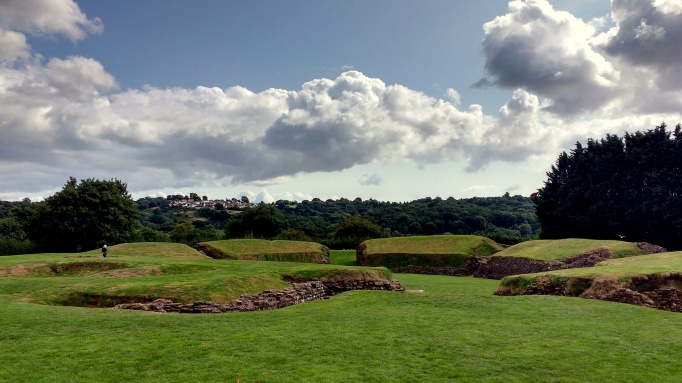
The Roman amphitheatre in Caerleon. Was this the fabled round table of King Arthur?
The travel information was checked at the time of writing in August 2019 but they are bound to change. Good sources for public travel information in UK/Wales are www.nationalrail.co.uk for trains across the UK and www.traveline.cymru for trains/buses in Wales.
Unless otherwise stated, all photos on this website are my own. All rights reserved, so please ask permission if you wish to use them.
